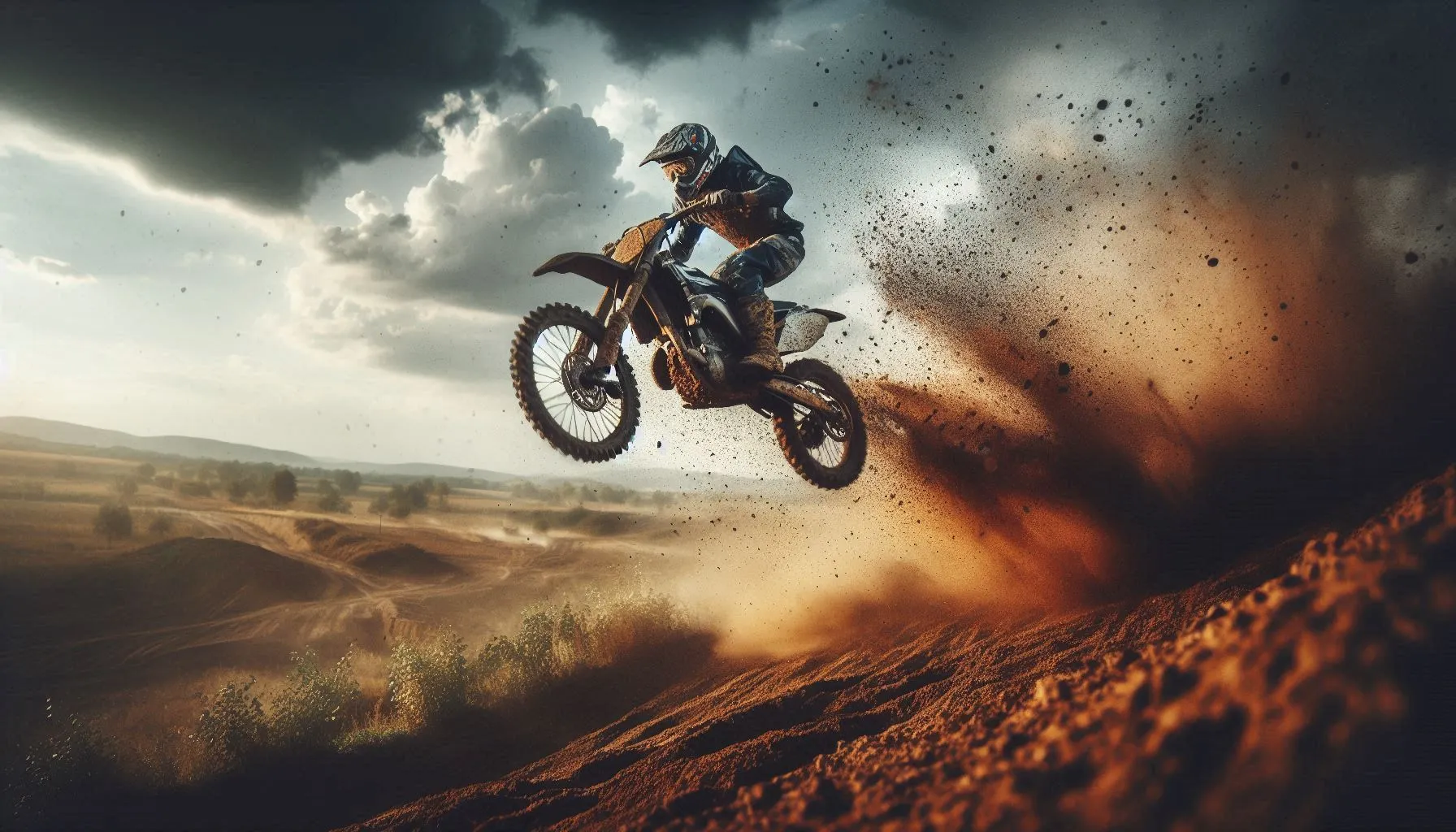
Introduction to Dirt Bikes
Dirt bikes are specialized motorcycles designed for off-road riding, providing enthusiasts with the agility and power to navigate challenging terrains. Their lightweight construction allows for exceptional maneuverability, making them ideal for both novice and experienced riders. With a focus on performance, these bikes are equipped to handle a variety of surfaces, from sandy trails to rocky paths and muddy tracks.
A defining characteristic of dirt bikes is their knobby tires, which are engineered to deliver superior traction on uneven surfaces. These tires grip the ground more effectively than standard motorcycle tires, enhancing stability and control when traversing slippery or loose terrain. This feature is crucial for maintaining speed without compromising safety, particularly in demanding conditions.
Another essential aspect of dirt bike design is the long suspension travel. This refers to the ability of the bike’s suspension system to absorb shocks and impacts from rough obstacles, such as bumps and jumps. A greater suspension travel not only enhances comfort for the rider but also increases the bike’s capability to tackle rugged trails. By allowing the wheels to maintain contact with the ground longer during uneven rides, it contributes significantly to the bike’s overall handling and agility.
The versatility of dirt bikes is noteworthy; they can be utilized for various activities, including trail riding, motocross, and enduro racing. Each type of dirt bike caters to specific riding styles and terrain, enabling riders to select a model that suits their preferences and capabilities. This adaptability makes dirt bikes an attractive option for those seeking an exhilarating off-road experience.
Types of Dirt Bikes

Dirt bikes are designed for specific types of terrain and riding styles, which makes understanding the various types essential for potential buyers or enthusiasts. One prominent category is motocross bikes, built for competitive racing on closed tracks. These bikes are lightweight, featuring powerful engines and well-suited suspension systems, delivering high performance in jumps and sharp turns.
Another popular type is trail bikes, which are designed for recreational use on less demanding trails. They are characterized by their durability and comfort, accommodating both novice and experienced riders. These bikes enhance the experience of exploring off-road paths, where factors such as ease of control and stability are paramount.
Enduro bikes are similar to trail bikes but are optimized for longer rides and can tackle more extreme terrains. They often have larger fuel tanks and enhanced suspension systems, allowing riders to take on challenging conditions while maintaining comfort over extended periods. For those who seek versatility, dual-sport bikes bridge the gap between road and off-road capabilities, featuring lights and street-legal equipment to facilitate seamless transitions between environments.
Adventure bikes cater to riders interested in long-distance travel, offering larger windshields and comfortable seating for extended journeys. These bikes often come with necessary features for touring, such as luggage mounting options. Supermoto bikes, distinct in their design, are tailored for street riding with dirt bike aesthetics, providing a unique combination of performance and handling on paved surfaces.
Trials bikes focus on precision and balance, enabling riders to navigate obstacles and courses that test their skills. They feature trials-specific tires and are lightweight for enhanced maneuverability. Hill-climb bikes are specialized for ascending steep inclines, equipped with robust engines and wide tires for traction. Finally, flat track bikes are optimized for oval racing, emphasizing speed and handling on dirt tracks. Understanding these types of dirt bikes helps riders make informed choices tailored to their riding preferences and capabilities.
Motocross Bikes
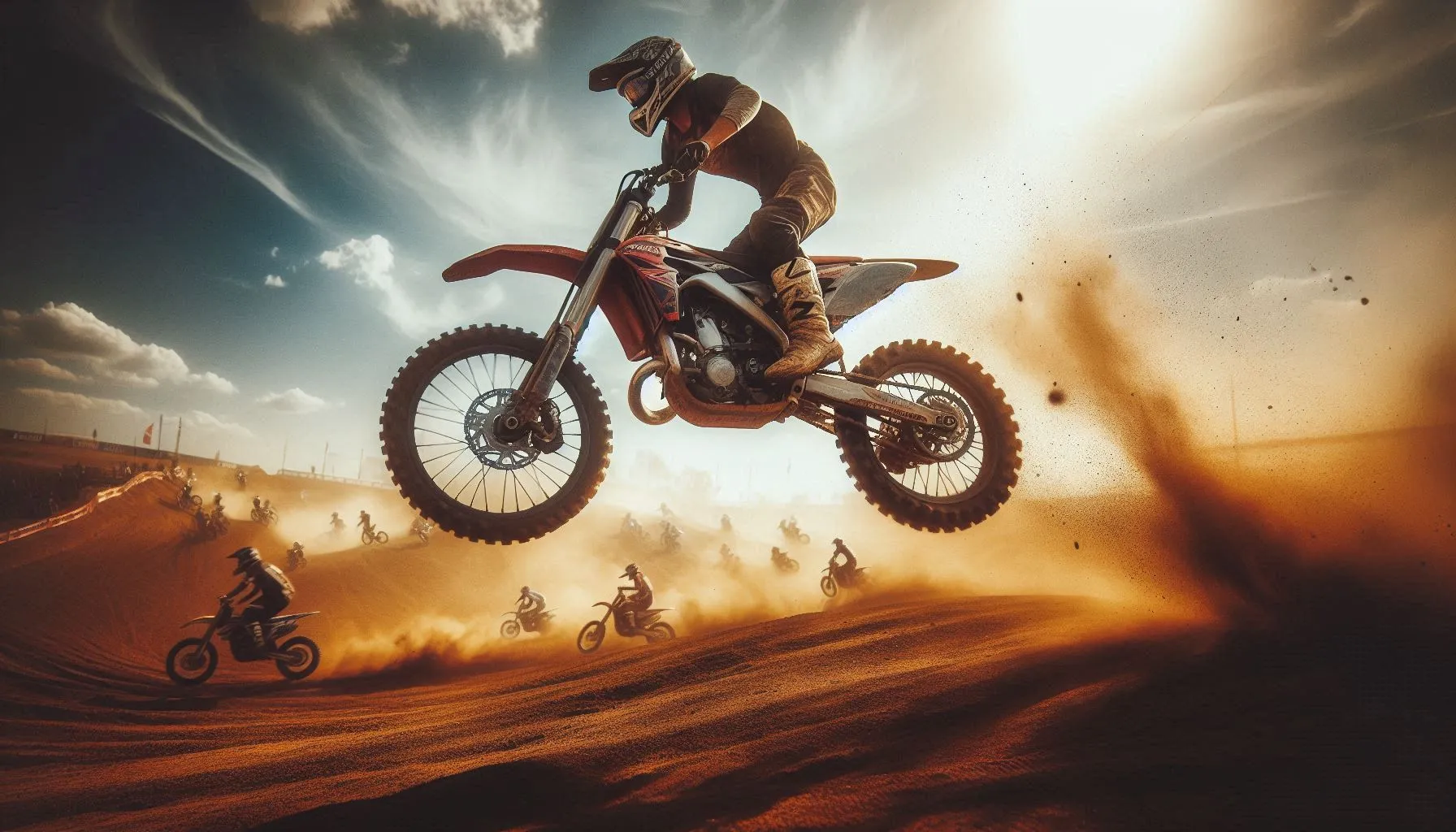
Motocross bikes are specifically engineered for outdoor racing, making them ideal for competitive terrains. These bikes are characterized by their lightweight frame and high-performance capabilities, allowing riders to maneuver easily through challenging courses filled with jumps, turns, and various obstacles. The design of motocross bikes emphasizes durability and agility, which are crucial for navigating rough tracks and managing the impacts of landing after jumps.
One of the defining features of motocross bikes is their powerful engines, which typically range from 125cc to 450cc, depending on the class of the bike. This engine capacity provides the necessary torque and power to achieve high speeds quickly, an essential aspect during races. The engine’s design also often incorporates two-stroke or four-stroke configurations, both of which offer unique advantages in terms of performance and maintenance. Riders can choose between the rapid acceleration of two-stroke engines and the smoother power delivery of four-stroke engines based on their racing style and preference.
Another vital component of motocross bikes is the long-travel suspension system, which consists of front forks and rear shock absorbers designed to absorb shocks from jumps and rugged terrain. This suspension system enhances rider control and comfort, allowing for better handling and stability, particularly during difficult maneuvers. Additionally, the use of specialized components, such as knobby tires and reinforced frames, contributes to the bike’s ability to grip varied surfaces while withstanding the wear and tear associated with aggressive riding.
Moto enthusiasts often consider the weight-to-power ratio, suspension settings, and handling characteristics when selecting a motocross bike. These factors can significantly impact performance and rider confidence, making it essential to choose a bike that aligns with one’s skill level and racing aspirations. Understanding these aspects is crucial for those looking to enter the world of motocross racing.
Trail Bikes

Trail bikes represent a versatile category of dirt bikes designed for various terrains and conditions, making them an excellent choice for those seeking an enjoyable off-road experience. These bikes are specifically tailored for durability and reliability, ensuring that riders can comfortably navigate trails without strenuous effort. A defining characteristic of trail bikes is their moderate power output, which strikes a balance between performance and manageability, making them ideal for beginners and recreational riders.
One of the primary advantages of trail bikes is their focus on comfort. With ergonomically designed seats, adjustable suspensions, and user-friendly controls, these bikes enable riders to maintain a relaxed posture, reducing fatigue during extended rides. This comfort is particularly beneficial for individuals who may be new to dirt biking, allowing them to build confidence and hone their skills without overwhelming them with excessive power or challenging handling characteristics. The moderate power of trail bikes also contributes to this comfort, as it prevents overwhelming acceleration that can intimidate novice riders.
Moreover, trail bikes typically feature a lightweight frame, enhancing maneuverability and enabling riders to tackle technical sections of trails with ease. Their capability to absorb shocks from uneven terrain further enhances their appeal, allowing users to fully engage with the thrilling experience of off-road riding. For recreational riders who prefer exploring various types of trails, including forest paths and hilly landscapes, trail bikes serve as a reliable companion, providing an accessible entry point into the world of dirt biking.
In summary, the combination of comfort, reliability, and moderate power makes trail bikes an advantageous option for both beginners and recreational enthusiasts. This allows riders to explore diverse terrains confidently, contributing to enjoyable and memorable outdoor adventures.
Enduro Bikes
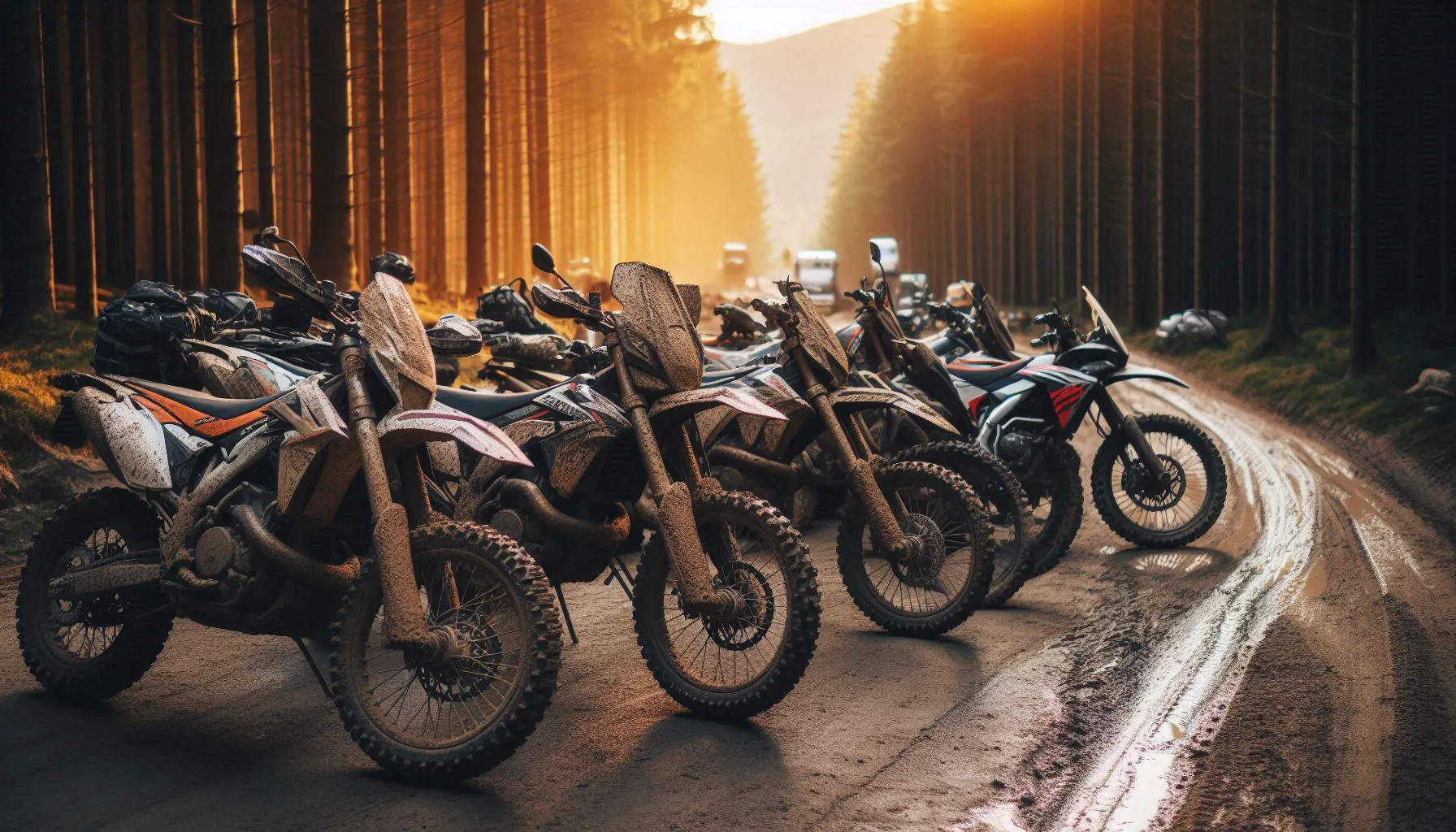
Enduro bikes are specifically designed for long-distance riding, excelling in both off-road and on-road conditions. They are widely regarded for their seamless combination of power, agility, and durability, making them an ideal choice for adventure seekers. One of the hallmark features of enduro motorcycles is their torque-rich engines. These engines provide robust power delivery at lower revs, facilitating easy navigation through challenging terrains such as steep hills, rocky trails, and thick mud, which are common in enduro scenarios.
In addition to their powerful engines, enduro bikes are equipped with advanced suspension systems that play a crucial role in enhancing their handling capabilities. High-performance suspensions allow these bikes to absorb shocks from uneven surfaces, improving rider comfort and control. The suspension system typically consists of long travel front and rear shocks, which ensure that the wheels maintain contact with the ground even when navigating obstacles. This is particularly important in enduro riding, where unpredictability is a constant factor.
The design of enduro bikes also incorporates lightweight materials, contributing to their overall agility. Riders benefit from this lightweight construction during extended rides, as it allows for easier maneuverability and less fatigue. The frame geometry is optimized to aid in balance, which is critical when tackling rough conditions. Furthermore, features such as protective guards and skid plates enhance the durability of enduro bikes, shielding them from potential damages that can occur during rigorous trail challenges.
Overall, the meticulous engineering of enduro bikes makes them a preferred option among riders seeking both adventure and reliability in rugged terrains. With their powerful, torque-rich engines and sophisticated suspension systems, these motorcycles cater to the needs of those who pursue off-road adventures over long distances.
Dual-Sport Bikes
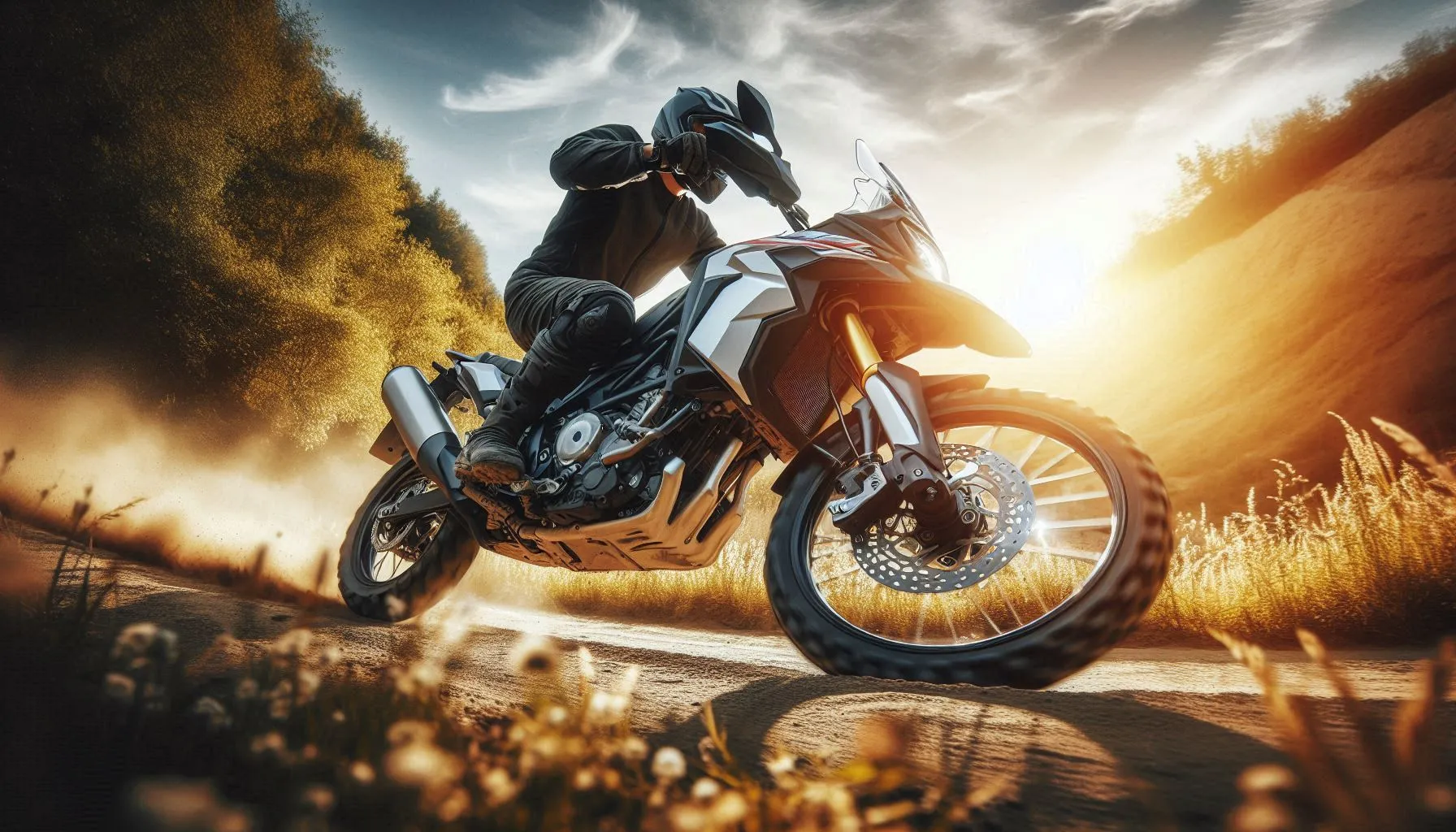
Dual-sport bikes represent an intriguing category within the world of dirt bikes, designed to seamlessly traverse both paved roads and rugged off-road terrains. This unique capability originates from their innovative engineering, which combines the functionality of a street motorcycle with the durability and resilience of an off-road bike. Riders who choose dual-sport bikes benefit from the versatility to navigate urban settings while also exploring nature trails, making them suitable for a wide range of activities.
One of the standout features of dual-sport bikes is their street legality, allowing riders to operate them on public roads without the need for conversion or additional modifications. This is made possible by the inclusion of essential components that enhance safety and comply with traffic regulations. These include mirrors, turn signals, and license plate holders, which are often not found on traditional dirt bikes. The presence of quieter exhaust systems also aids in reducing noise pollution, making them more suitable for use in populated areas.
In terms of design and performance, dual-sport bikes maintain a lightweight structure, which is critical for off-road maneuvers. Their suspension systems are typically responsive and adjustable, allowing riders to handle various terrains efficiently. With larger wheels and sturdy tires, these bikes enhance traction, ensuring a smoother ride regardless of surface conditions. The ability to easily transition from dirt paths to city streets further underscores their practicality.
Ultimately, dual-sport bikes cater to enthusiasts who value the ability to explore diverse environments with a single vehicle. By striking a balance between street performance and off-road capability, they open up a world of adventure for riders of all skill levels. These unique attributes make dual-sport bikes an appealing option for individuals looking to expand their riding experiences without the need for multiple motorcycles.
Adventure Bikes
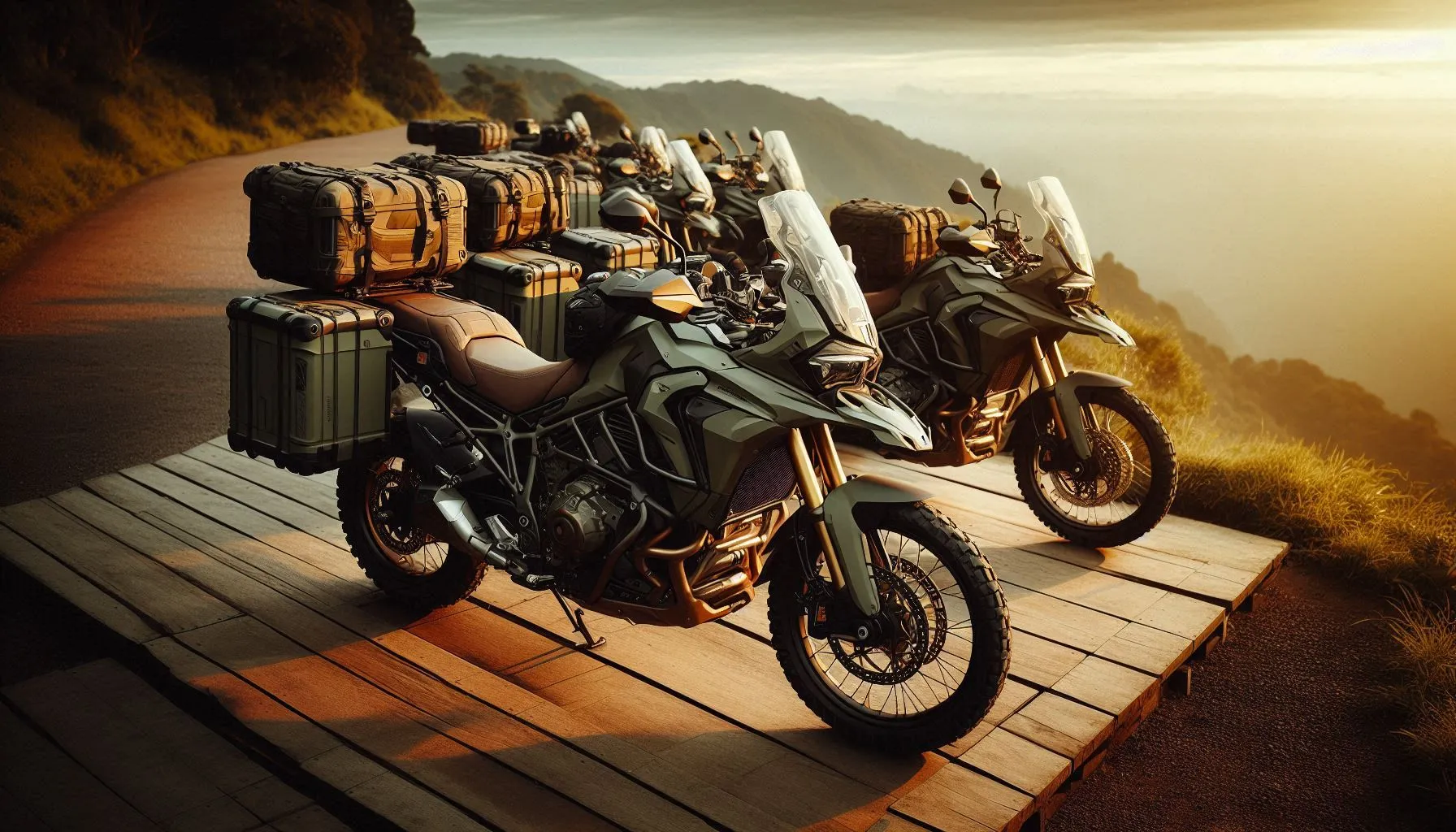
Adventure bikes represent a specialized category designed for long-distance travel and versatility across various terrains. These motorcycles combine elements of street and off-road capabilities, allowing riders to embark on journeys that may include highways, gravel roads, and rugged trails. One of the defining features of adventure bikes is their larger fuel tanks, which offer an extended range. This is particularly beneficial for riders traversing remote areas where fuel stations may be scarce, ensuring that long rides can be undertaken without frequent refueling stops.
Moreover, adventure bikes are equipped with ample luggage space, making them ideal for extended trips. The inclusion of sturdy panniers or side cases allows users to carry necessary gear, clothing, and supplies comfortably. This feature is essential for adventurers who plan on spending multiple days on the road and require secure storage for their belongings. The design of adventure bikes also typically accommodates various accessories such as racks and top cases, further enhancing their carrying capacity.
Comfort is another crucial aspect that sets adventure bikes apart. They usually feature ergonomically designed seats that provide support during long hours of riding, along with adjustable handlebars and foot pegs that can be tailored to the rider’s preferences. The suspension systems in these bikes are engineered to handle bumpy terrain while ensuring that the rider remains comfortable. This focus on comfort, combined with robust performance and durability, allows adventure bikes to perform well on both paved and unpaved roads, making them a top choice for explorers seeking to cover diverse landscapes.
Supermoto Bikes
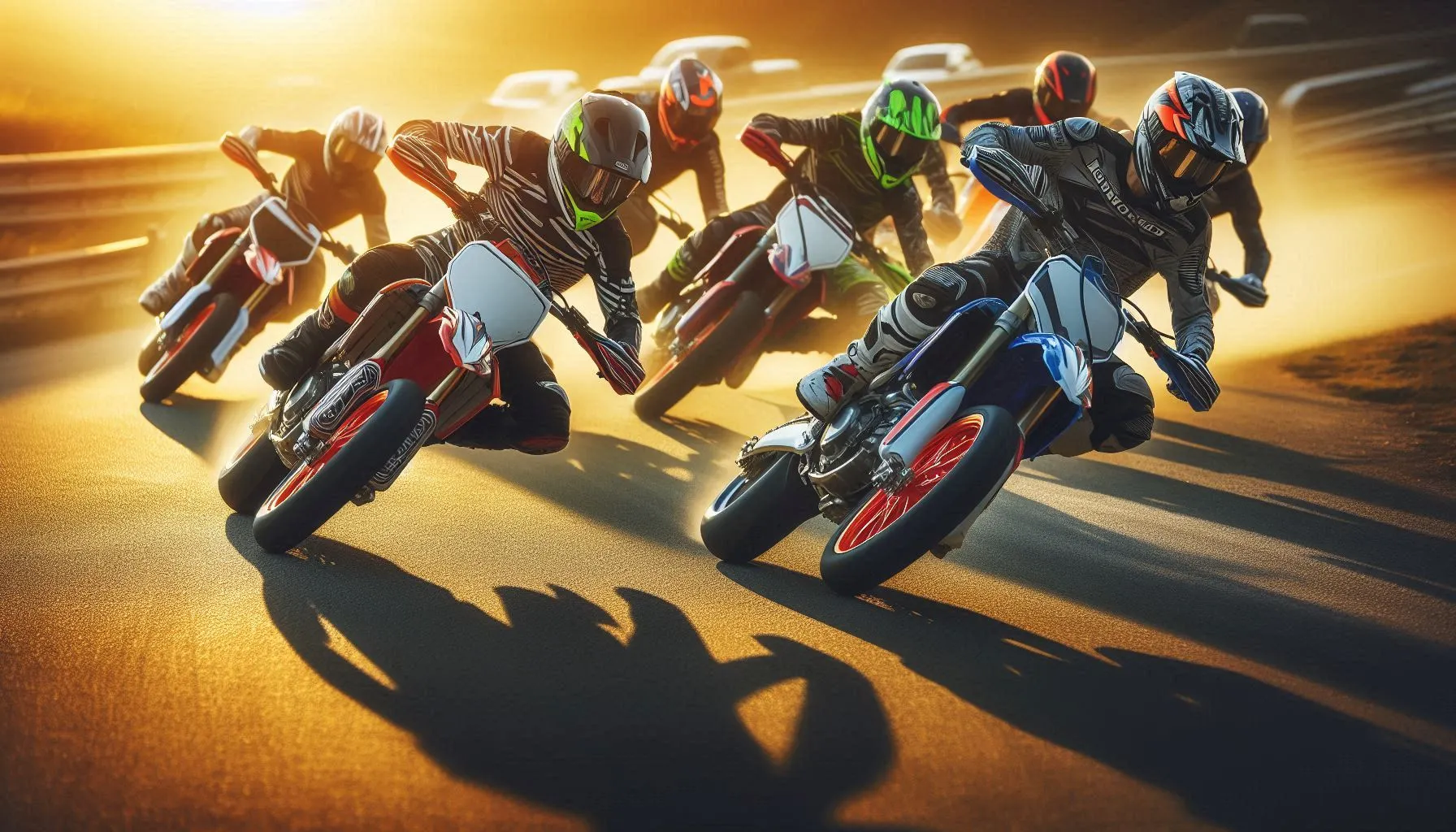
Supermoto bikes represent a unique fusion of dirt biking and street performance, effectively catering to riders who seek versatility in their motorcycle experience. Originally, these bikes were created by modifying traditional dirt bikes, converting them for optimal use on paved roads while maintaining their off-road capabilities. This dual functionality makes supermoto bikes particularly appealing to a broad range of riders who appreciate both styles of biking.
One of the most notable modifications made to supermoto bikes is the installation of road tires. These tires feature a different tread pattern, designed to offer enhanced grip and stability on smooth surfaces. The gripping capabilities are paramount, particularly when navigating tight corners or achieving higher speeds on asphalt. Moreover, the wide profile of road tires allows for better traction, making it easier for riders to maintain control during challenging maneuvers.
In addition to tire adjustments, supermoto bikes often come equipped with sportier suspensions. These suspensions are engineered to reduce bounce and provide a more stable ride at speed, allowing for agility that is essential in urban environments. This enhanced suspension system is a critical element, as it ensures that riders can handle the dynamic demands of both off-road conditions and city streets with confidence and ease.
For riders who enjoy the thrill of dirt biking but also wish to explore urban surroundings, supermoto bikes deliver an ideal compromise. Beyond their impressive performance, these bikes are designed to accommodate a specific kind of rider who values both speed and agility. With their unique features, supermoto bikes stand as a testament to innovation within the motorcycle community, making them a popular choice among enthusiasts.
Hill-Climb Bikes

Hill-climb bikes are specialized machines designed for tackling steep inclines and challenging terrain, emphasizing efficiency, control, and lightweight construction. These bikes are meticulously crafted to empower riders to conquer demanding hills, making them a marvel of engineering. Key features include lightweight frames made from materials such as carbon fiber, a wide range of gears to tackle varying gradients, reliable braking systems such as disc brakes, and specific tire designs for optimal traction.
The gearing system plays a crucial role in hill climbing, with a high range of gears providing smoother climbs. Compact chain sets paired with wide-range cassettes are ideal for managing steep ascents, while long-cage derailleurs accommodate larger cogs for an even wider range of gears. Additionally, the design of hill-climb bikes often incorporates elements such as suspension systems to absorb shock from uneven ground, improving control and comfort. Fixed-gear bikes are also popular for hill climbs, offering an efficient and fun ride quality when the gradient is consistent, and the gearing selection is right. These bikes can be built to be extremely lightweight, making them ideal for competitive hill climbing. Custom builds often feature modifications such as sanded-down framesets, lightweight cranksets, and optimized gearing to minimize weight and maximize efficiency.
Overall, hill-climb bikes are designed to provide riders with the tools they need to tackle challenging hills with confidence and precision, whether for competitive racing or recreational riding. Their unique combination of lightweight construction, advanced gearing systems, and specific design elements makes them the perfect choice for conquering steep inclines.
Flat Track Bikes
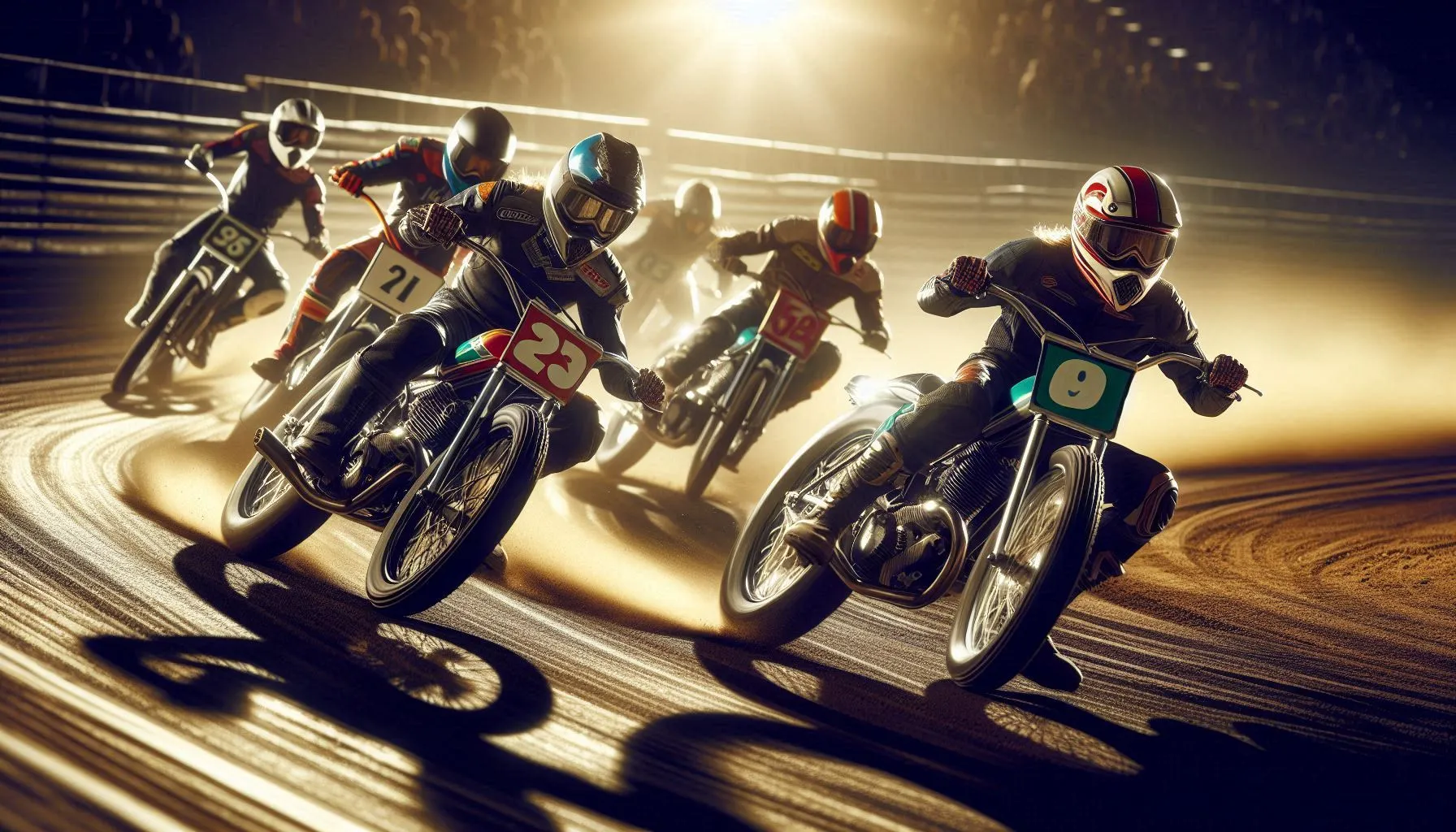
Flat track bikes are a unique breed of motorcycles designed for the high-speed, adrenaline-fueled world of flat track racing. This form of motorsport, which originated in the United States, involves racing on oval-shaped dirt tracks, emphasizing corner speed, finesse, and sheer power. Unlike speedway bikes, flat trackers are heavier, more powerful, and equipped with rear brakes, making them a distinct category within motorcycle racing. Flat track racing has its roots in the early 20th century when motorcycles began to replace bicycles on wooden board tracks. These tracks, inspired by European designs, were steeply angled and required constant maintenance. However, they were cheap to construct and brought in significant business and hype. The American Motorcycle Association (AMA) later legitimized motorcycle racing by creating the Class C Dirt Track series, which allowed manufacturers like Indian and Harley-Davidson to compete on flat, dirt tracks.
Flat track bikes are characterized by their robust build, powerful engines, and specific design elements tailored for the demands of flat track racing. They typically fall into two main classes: Singles, which are smaller, lighter 450cc bikes often derived from motocross machines, and Twins, which are larger, four-stroke 750cc bikes designed specifically for flat track competition.
- Singles Class: These bikes are lighter and more agile, often based on modified motocross bikes. They are ideal for smaller tracks and tighter corners.
- Twins Class: These bikes are heavier and more powerful, built from the ground up for flat track racing. They dominate larger tracks and are favored by top competitors.
Flat track racing encompasses several event types, each with its unique challenges and requirements:
- The Mile: Held on oval-shaped dirt tracks approximately one mile in length, these races favor larger engine displacements and reach speeds of up to 225km/h.
- The Half Mile: Similar to the mile race but on shorter tracks, these races still demand high speeds and precise control.
- Short Track: Held on smaller, often indoor tracks, these races favor lighter motorcycles and require quick reflexes and agility.
- TT Steeplechase: Featuring irregularly shaped dirt courses with jumps and tight turns, these races test riders’ versatility and control.
Today, flat track racing is experiencing a resurgence in popularity, thanks in part to the custom motorcycle scene and the relatively low cost of entry. The American Flat Track Championship, formerly known as the Grand National Championship, continues to attract top riders and manufacturers, including Harley-Davidson and Indian Motorcycle. For those interested in delving deeper into the world of flat track bikes and racing, several resources offer detailed insights and historical perspectives:
- A Guide to Flat Track Racing by Devitt Insurance provides a comprehensive overview of the sport, including its origins, key features, and racing types.
- What is Flat Track? by Australasian Dirt Bike Magazine offers a detailed look at the history and current state of flat track racing, including its various event types and the machines that compete in them.
- Two Wheel Madness: The History of Flat Track Racing by Old Bike Barn delves into the rich history of flat track racing, from its early days on wooden board tracks to its current status as a premier form of motorsport.
Flat track bikes are a testament to the enduring appeal of high-speed, high-stakes motorcycle racing. With their powerful engines, robust designs, and the skillful riders who pilot them, these machines continue to captivate audiences and inspire new generations of racers.
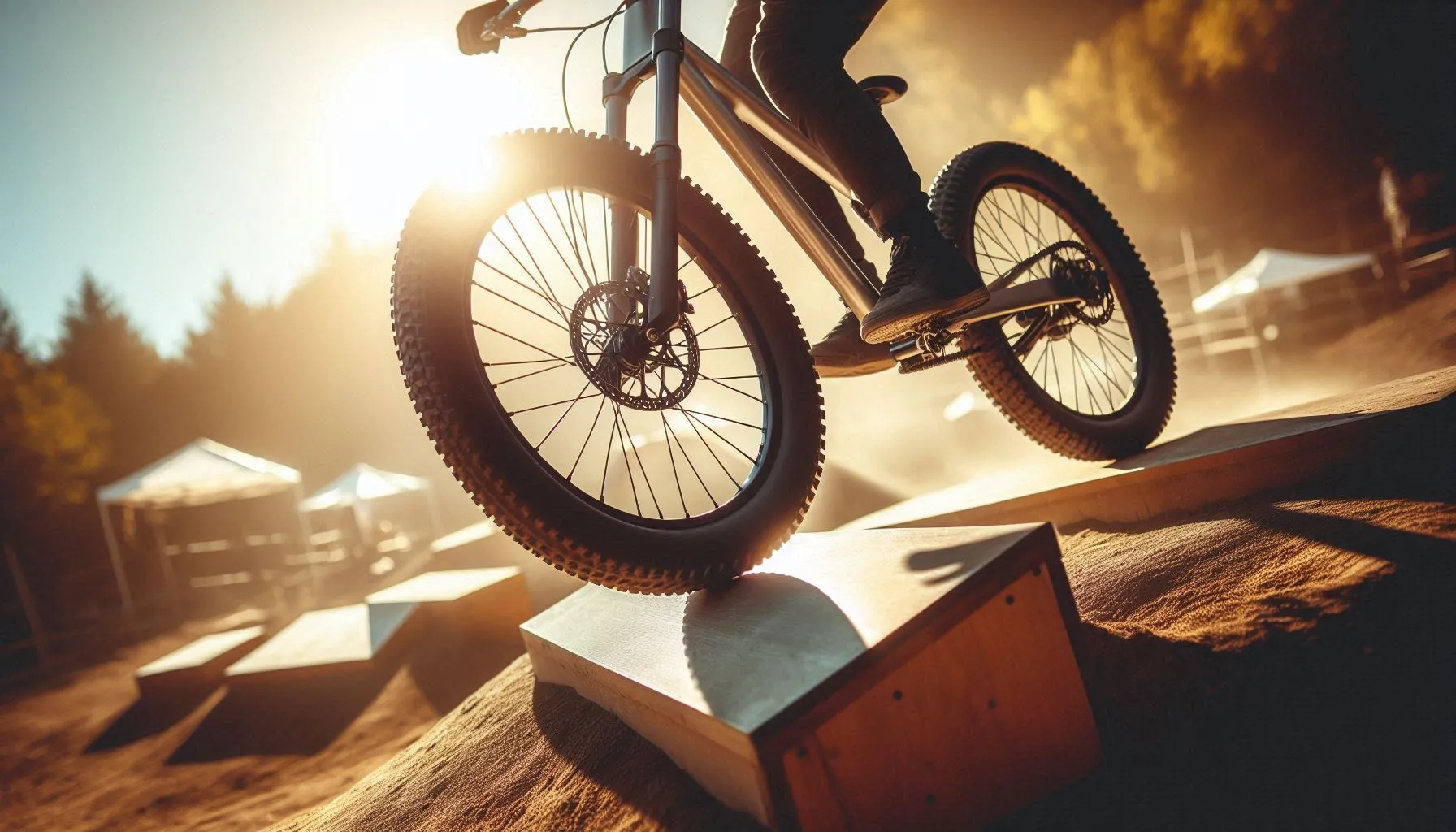
Key Factors to Consider When Choosing Dirt Bikes
Choosing the right dirt bike involves several critical factors that ensure the motorcycle aligns well with the rider’s needs and preferences. The first factor to assess is the rider’s skill level. Whether a beginner or an advanced rider, matching the dirt bike’s power and handling characteristics with one’s experience is essential. For novice riders, smaller displacement engines are often recommended, while experienced riders may opt for more powerful options that provide greater speed and performance.
Next, understanding the primary purpose of the dirt bike is crucial. Different types of riding, such as racing or trail riding, require specific features. For instance, racing dirt bikes are typically lightweight with high-performance components, while trail bikes prioritize durability and comfort for longer rides over rugged terrains. By identifying the intended use, riders can better select a bike that meets their demands, enhancing their overall riding experience.
The engine type is another paramount consideration. Dirt bikes usually come with two-stroke or four-stroke engines, each offering unique advantages. Two-stroke engines are known for their lightweight and high power-to-weight ratio, making them ideal for racing. In contrast, four-stroke engines are generally more fuel-efficient and provide smoother power delivery, which can be beneficial for trail riding. Riders should evaluate which engine type aligns better with their riding style and maintenance preferences.
Lastly, potential maintenance tasks and how they fit into the rider’s routine warrant careful attention. Dirt bikes require regular upkeep, and understanding the level of maintenance involved with a specific model is essential for longevity and performance. Maintenance tasks may include oil changes, air filter cleaning, and chain adjustments. By considering these factors, prospective buyers can make an informed decision, ensuring they select a dirt bike tailored to their personal preferences and riding ambitions.